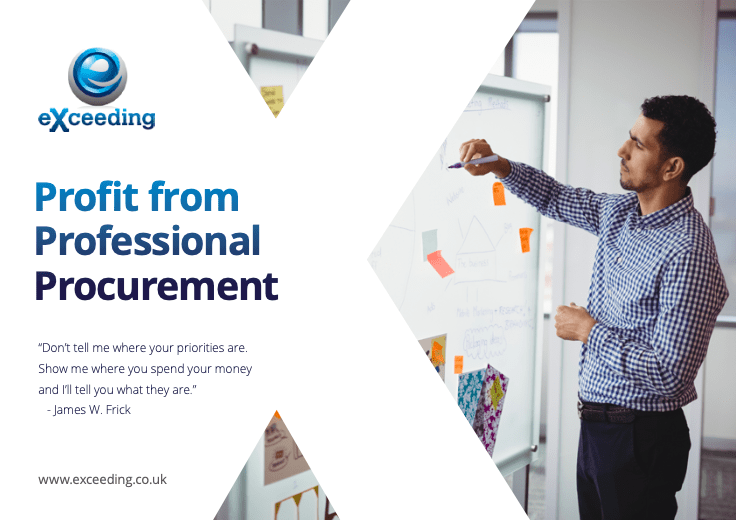Introduction
Many professional associations are seeing membership declines, with 68% of organisations struggling to increase membership since 2020. But what is causing this decline in membership, and how can you avoid it in your organisation?
What Is A Membership Organisation?
A membership model is a type of business plan in which individuals and, in some cases, organisations pay a recurring fee to gain access to the value, support, exams, and accreditations of an organisation. It outlines the various membership levels, revenue sources, marketing activities, events and conferences, and financial information.
The success of top membership organisations is frequently attributed to the early adoption of a membership model. If you haven’t already created one for your company, the sooner you do, the sooner you’ll realise:
- Membership, engagement, and retention have all increased
- A higher percentage of membership fees have been paid on time
- There is additional revenue growth
If you do not formalise, standardise, and commit to a set of procedures, you will end up with disorganisation, no way to measure progress, and no way to scale growth.
What Are The 7 Advantages Of Using A Membership Model?
Steady Cash Flow: Because members pay monthly fees, calculating and forecasting cash flow is relatively simple.
Reduced Marketing Expenses: Once you’ve acquired a new member, you won’t have to market to them again.
Quick and Direct Feedback: Members are more likely to provide direct feedback because it is in their best interests to keep the organisation providing high value, especially for professional associations where networking opportunities, certification, and education may be linked to their career.
Exclusive Data: Organisations that build communities can track member behaviour. Understanding this data allows you to fine-tune your membership model in order to gain more members, lower costs, and increase member retention.
Additional Revenue Possibilities: Members can be sold additional services, levels of accreditation, and pay for events and exams in addition to membership dues. If your membership is large enough, you can also get sponsorship from businesses that want to advertise to your members.
Why Is Membership In Professional Associations Declining?
Although there are numerous explanations for this decline, including Covid and current financial uncertainty, one of the primary culprits is associations’ failure to meet their members’ needs.
1. Associations Are Not Meeting The Needs Of Their Members
Recent social disruptions, as well as shifts in beliefs and communication preferences, have changed how members interact with associations and the experiences they seek from memberships.
Along with shifting values among current members, many associations overlook the junior demographic of potential future members.
To remain relevant and successful in today’s world, membership organisations must listen to and adapt to their audiences’ changing needs. However, a lack of bandwidth, combined with a lack of access to relevant data and expertise, means that organisations will struggle to ‘self-fix’ their procurement issues in order to provide services that members desire.
Founders and top-level organisers may not always have the capacity or background knowledge to tender for goods, products, or services to meet the demands of members and stakeholders; this is where we can assist! It is key for all membership organisations to ensure the investments they make with members money delivers best value for money and it transparent and auditable.
Capacity vs capability
A lack of proper procurement infrastructure, resources, and procedures can lead to uncontrolled spending and accidental orders, all of which cost the organisation money. Another major challenge for organisations that may outsource the majority of their work and only have a small core team of people is having enough people with the right knowledge.
Having a broader understanding of the procurement process can provide insights into cost-cutting measures that an organisation can implement and areas where overspending may occur, allowing money saved to be invested in new product or service offerings.
Our expertise in supplier relationship management can also assist organisations in transitioning from transactional to more collaborative strategic relationships. This partnership will stand the test of time, allowing for greater innovation, evolution, increased digitalisation opportunities, lower risk, and better value for money.
Transparency
There are a number of stakeholders who oversee various areas of service, as well as paying members who all want to know where their money is going.
The eXceeding team collaborates with your teams to define specific specifications and takes the time to understand your internal processes and service requirements to create a bespoke procurement process that works for your organisation, whether supporting or working directly with you. We can also assist with gathering the evidence required to present proposed new ways of working to senior team members.
2. Financial Uncertainty
The pandemic and ongoing conflicts have heightened financial uncertainty in an already fragile economy. Many people join a professional association for financial reasons, with factors such as membership cost and benefits received heavily influencing their decision. Many people believe that, given the current state of the economy, the benefits do not outweigh the physical value of membership.
With so many free resources and online communities available, associations must demonstrate their worth.
What Is The Cost-of-Living Crisis?
The ‘cost of living crisis’ refers to a drop in ‘real’ disposable incomes in the UK since late 2021. It is primarily the result of high inflation outpacing wage and benefit increases, a situation exacerbated by recent tax increases.
Struggling to meet day-to-day living expenses is nothing new for large segments of the population. However, data from the Office for National Statistics show that keeping one’s head above water is becoming increasingly difficult: inflation in July was 10.1%, up from 9.4% in June.
The primary cause of the dramatic rise, according to the most recent ONS report, is rising food prices. Last year at this time, inflation was 2%.
Furthermore, more households are using consumer credit to meet their basic needs. Credit card lending is growing at a 13% annual rate, according to the Bank of England’s Money and Credit Report for July, the fastest rate since 2005.
Why Is This Happening?
The dispute between Russia and Ukraine is a major contributor to the cost-of-living crisis, but there are numerous other factors that have led to the ‘perfect storm’ that is hitting UK household budgets in:
COVID-19
The consequences of the pandemic must not be overlooked. It has caused social and economic upheaval in addition to the health consequences, ranging from the multi-billion-pound cost of furlough to widespread destruction in the transportation, travel, hospitality, entertainment, and leisure industries. The country is unprepared for the cost-of-living crisis as a result of its economic vulnerability.
Weather
A particularly cold winter in 2020/21, particularly in parts of Asia, increased demand for energy on global wholesale markets, affecting supply and thus prices.
Environment
With the rise of the green agenda, there has been a shift toward renewable energy sources for producing electricity, such as wind and solar, resulting in the closure of older power plants, particularly coal-fired ones. Renewables, however, are not yet capable of supplying enough power, necessitating continued reliance on gas, which remains prohibitively expensive.
Supply Chains
Lorries require both drivers and fuel. Each is in short supply, and as distribution costs rise, so do product prices.
Agriculture
Agriculture and food production necessitate a substantial amount of energy. It also heavily relies on fertilisers, which require a lot of energy to manufacture. It also necessitates the development of an efficient and cost-effective distribution network, which has been lacking in recent years. Farmers are also paying higher wages as a result of Covid regulations.
Budget
Costs in procurement can be high when the process is no longer fit for purpose or when people within the organisation do not adhere to it.
We frequently see organisations making hasty purchasing decisions, sometimes out of necessity. Due to a lack of staff capacity or experience in managing complex supplier relationships, supplier contract terms written by supplier’s legal teams are accepted but not fully understood and rarely managed.
Add to that a lack of data visibility – both in terms of your own spend and wider market data for benchmarking purposes – and it’s easy to see how internal teams can struggle to ensure they’re getting good value for money.
A fresh set of eyes can help you spot real opportunities while also acknowledging the impact that cost cuts may have on the organisation. We can assist organisations in getting to grips with their procurement processes by assisting in the creation of a cost-efficient system as well as streamlining processes to save time and reduce human error in this field.
Case study
The National Education Union (NEU) is Europe’s largest education union, with over 450,000 members, including the majority of teachers. The NEU wanted to make certain that their replacement WAN was procured in a transparent, fair, and auditable manner, ensuring the best value for the organisation and its members. Having not conducted a WAN procurement or tender in a long time, and with limited in-house resources or market knowledge, the NEU enlisted the help of eXceeding.
We identified three major issues that needed to be addressed as part of the project:
- The NEU tasked eXceeding with saving money, whilst getting a significantly increased capacity and highly resilient WAN.
- Reducing the possibility of downtime or disruption when switching to a new provider.
- With additional purchases and a coterminous contract end date, flexible contacts were needed.
The eXceeding team assisted the NEU in benchmarking and re-running the existing contract with a capable supplier, saving hundreds of thousands of pounds. With a smooth and simple transition, a coterminous contract with bespoke terms was used.
3. Digital Transformation
With a customer-driven, digital-first mindset, digital transformation approaches all aspects of an organisation, from business models to customer experiences to processes and operations.
It uses AI, automation, hybrid cloud, and other digital technologies to drive intelligent workflows, faster and smarter decision-making, and real-time response to market disruptions. Finally, it modifies customer expectations and creates new business opportunities.
While many organisations have undertaken a digital transformation in response to a specific competitive threat or market shift, the goal has never been to implement a one-time fix.
What Are The Forces Driving Digital Transformation?
The driving forces behind digital transformation have always been customer expectations. It all started when a slew of new technologies made novel types of information and capabilities available, such as:
- Cloud Computing
- Social Media
- Blockchain
- The Internet of Things (IoT)
Amazon and Netflix, for example, have taken market share away from their competitors by implementing these technologies to:
- Improve processes
- Reimagine business models
- Continuously strive to enhance the customer experience
Competitors either adapted to provide greater capability and convenience, or struggled and, in some cases, disappeared. Customers today expect to conduct all business digitally, whenever and wherever they want, on any device, with access to all necessary supporting information and content.
Finally, digital transformation is about meeting these ever-increasing demands. The most common entry point for an organisation, however, is a transformation initiative that addresses a specific means to that end, such as:
- Protecting against instability
- Providing on-demand access to additional resources with fewer constraints
- Business process automation
- Successfully dealing with change
Digital transformation can be a challenging task. It should have an impact on all aspects of your organisation, and when done correctly, it will pave the way for you to grow and provide better experiences for your members.
Technical Knowledge
Many organisations’ strategies are defined by their CIOs or IT Director’s. Relying on internal team members, no matter how good they are at their jobs, means they will always be limited to personal experience. Organisations frequently lack internal knowledge of the options available to them, as well as how to best use existing or new solutions.
Every day, our market consultants negotiate new agreements. This means they have a wealth of current and relevant experience with the issues that can arise from poorly planned procurement strategies. Rather than addressing the entire process, our analysis will uncover hidden or less obvious strengths and opportunities, as well as areas where technology and digitalisation can be beneficial.
We even have our own procurement platform that can support key procurement process elements like SQs, PQQs, ITTs, and scoring.
Case Study – ECMWF
24/7 operational service and a research institute ECMWF creates global weather forecasts and other data for its members, cooperating states, and the general public. With one of the world’s largest supercomputer facilities and meteorological data archives, the institute collaborated with eXceeding to relocate its datacentre from the UK to Italy.
We identified three major challenges while working with the ECMWF’s IT and procurement teams:
- Business-critical IT infrastructure and datacentre build
- Governance and formal process
- Risk mitigation
The eXceeding team worked with a number of SME procurement consultants who were subject matter experts to complete approximately 15 individual procurements.
We defined specifications that adhered to internal governance and were OJEU compliant, while managing the entire process and the complex datacentre build transition that took place in 2020 and 2021.
Compliance And Data Protection
Compliance and data protection are important considerations throughout the procurement process due to the nature of some membership organisations.
When everything is centralised via software and process systems, it is easier to monitor and manage contract terms while ensuring compliance and governance. We can help organisations manage their procurement and streamline their processes because we have over a decade of experience assisting the CRFCA and ICAEW in improving their procurement strategies.
Case Study – CRFCA
The Council of RFCAs (CRFCA), which is part of the MOD, was formed by the 13 individual Reserve Forces and Cadets’ Associations to provide central coordination and a focus to enable the Associations to meet the needs of their customers within available resources.
CRFCA had been working with the same provider for many years, but had identified opportunities for service delivery optimisation and needed to market-test the current model.
eXceeding identified 3 key challenges:
- Category knowledge
- Compliance and data protection
- Internal resources
The eXceeding team transitioned the CRFCA to a new provider while managing a fully compliant OJEU procurement and working closely with key stakeholders to understand the internal processes and service requirements. This resulted in time and cost savings, as well as a more appropriate technology provider.
In Summary
Membership staff frequently wear multiple hats, including sales, finance, marketing, and human resources. It can frequently leave you with insufficient time, which has a negative impact on your work-life balance.
It can be difficult to find ways to reduce your workload without sacrificing your output. Outsourcing to eXceeding is one option for assisting with this. Outsourcing allows you to complete tasks more quickly, gain access to specialised knowledge, and ultimately do a better job.




